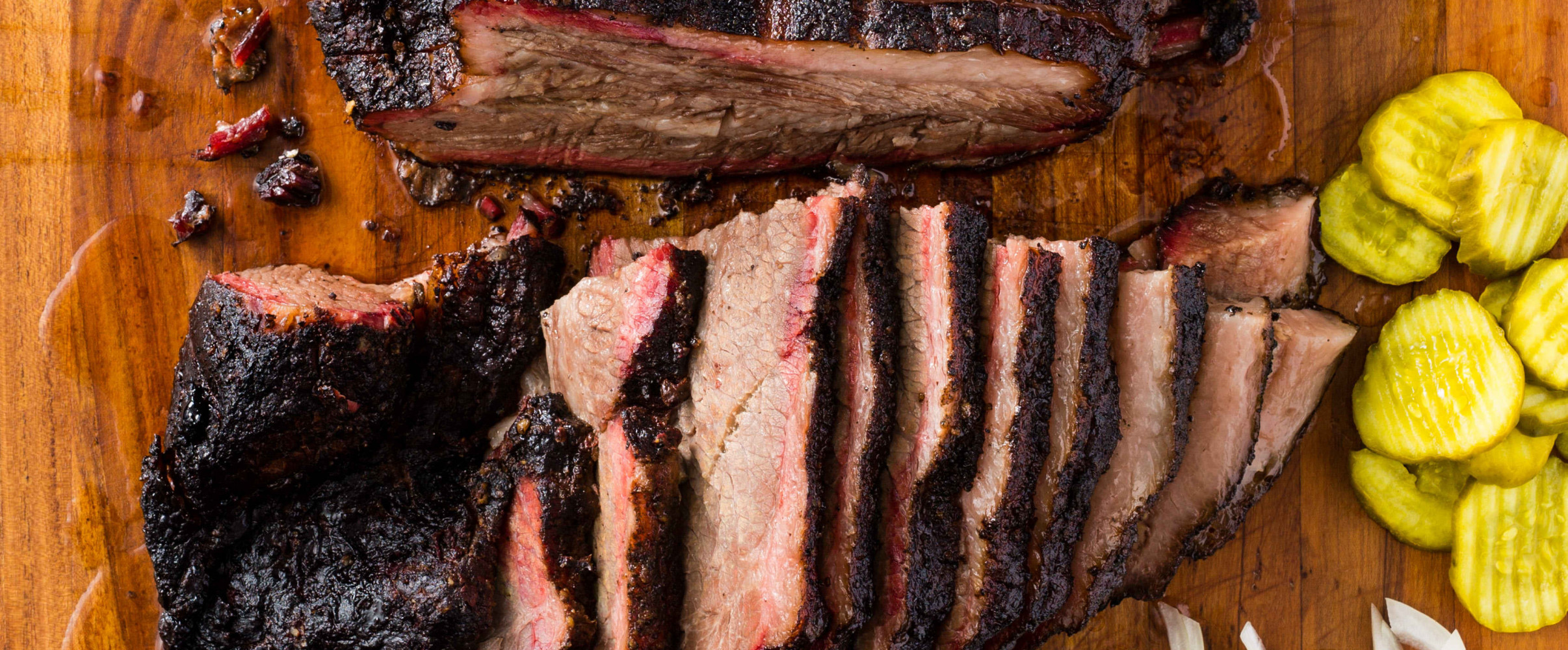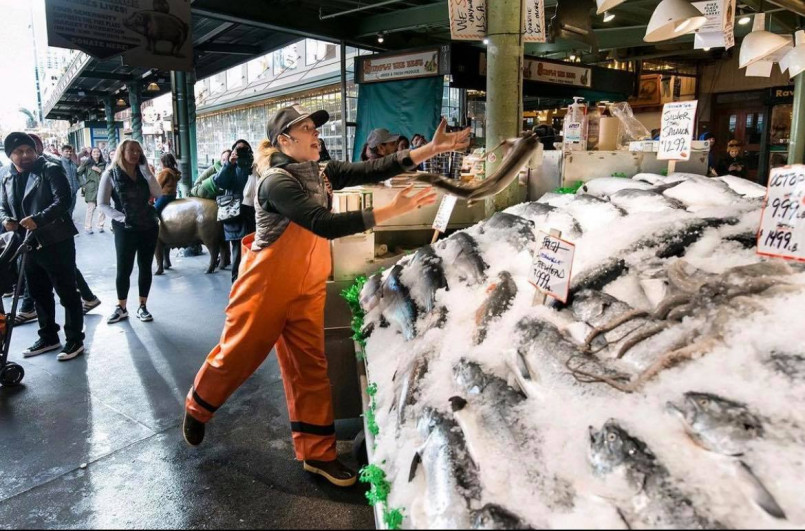From Texas brisket to Carolina whole hog, America's barbecue landscape is as diverse as it is delicious. These states have developed distinctive regional styles that transformed slow-cooking meat into an art form with passionate followings and fierce rivalries.
American barbecue stands as one of the country's most celebrated culinary traditions, with regional styles that inspire fierce loyalty and friendly competition. What began as practical preservation methods has evolved into distinct cooking philosophies that showcase local ingredients, cultural influences, and generational knowledge passed down through decades of smoke-filled pits.
Each state on this list has cultivated its own approach to the slow transformation of meat through wood smoke, developing signature cuts, sauces, and techniques that tell the story of its people and history. From the beef-centric traditions of Texas to the whole hog approach of the Carolinas, these states represent the pinnacle of American barbecue mastery.
Texas BBQ: Brisket Kingdom
Texas stands as barbecue royalty with its unwavering focus on beef, particularly the once-humble brisket transformed into a smoky masterpiece. Central Texas BBQ emerged from German and Czech meat markets, where simple salt and pepper rubs let the meat and smoke take center stage. Today's pitmasters maintain this tradition, cooking briskets low and slow for 12-16 hours until the tough cut develops its characteristic bark and melting texture.
Beyond Central Texas, the state offers diverse regional styles: East Texas features chopped beef sandwiches with sweet tomato sauce; South Texas showcases barbacoa traditions; and West Texas employs direct-heat "cowboy style" cooking. But it's the Central Texas holy trinity of brisket, sausage, and beef ribs that draws international pilgrims to legendary establishments in Lockhart, Austin, and small towns throughout the Hill Country.
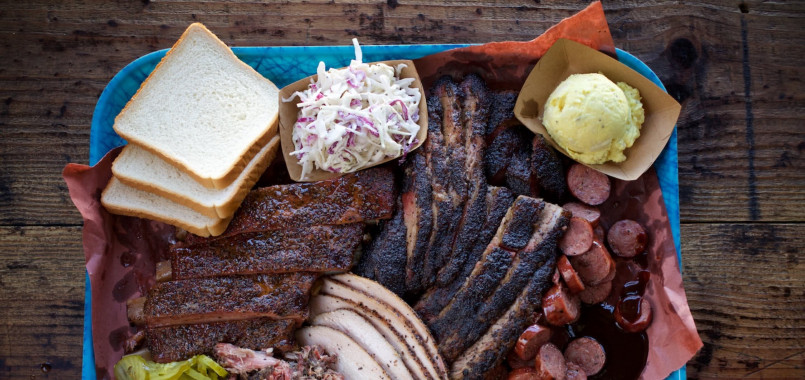
North Carolina: Whole Hog Heritage
North Carolina divides itself along distinct barbecue lines. Eastern North Carolina champions the whole hog tradition, cooking entire pigs slowly over hardwood coals before chopping the meat and dressing it with a thin, vinegar-pepper sauce that cuts through the rich pork with bright acidity. This minimalist approach highlights the pure pork flavor enhanced by smoke.
Western North Carolina (Lexington-style) focuses on pork shoulders rather than whole hogs, and introduces tomato to the vinegar sauce, creating a slightly thicker, sweeter complement to the smoke-infused meat. Both traditions share a reverence for slow cooking and maintaining heritage techniques, with many establishments still using traditional brick pits rather than modern smokers.
South Carolina: Mustard Gold Standard
While South Carolina shares North Carolina's dedication to pork, its distinctive contribution to barbecue culture is the gold-hued mustard sauce that dominates the central "Midlands" region around Columbia. This unique sauce-combining yellow mustard, vinegar, and spices-traces its origins to German settlers who brought their mustard traditions to the American South.
South Carolina represents a complete barbecue crossroads, featuring four distinct sauce regions: the vinegar-pepper sauce of the northeast (similar to Eastern North Carolina), the light tomato sauce of the northwest, the heavy tomato sauce of the west, and the signature mustard sauce of the Midlands. This diversity makes South Carolina perhaps the most complete barbecue state, offering a full spectrum of Southern barbecue traditions.
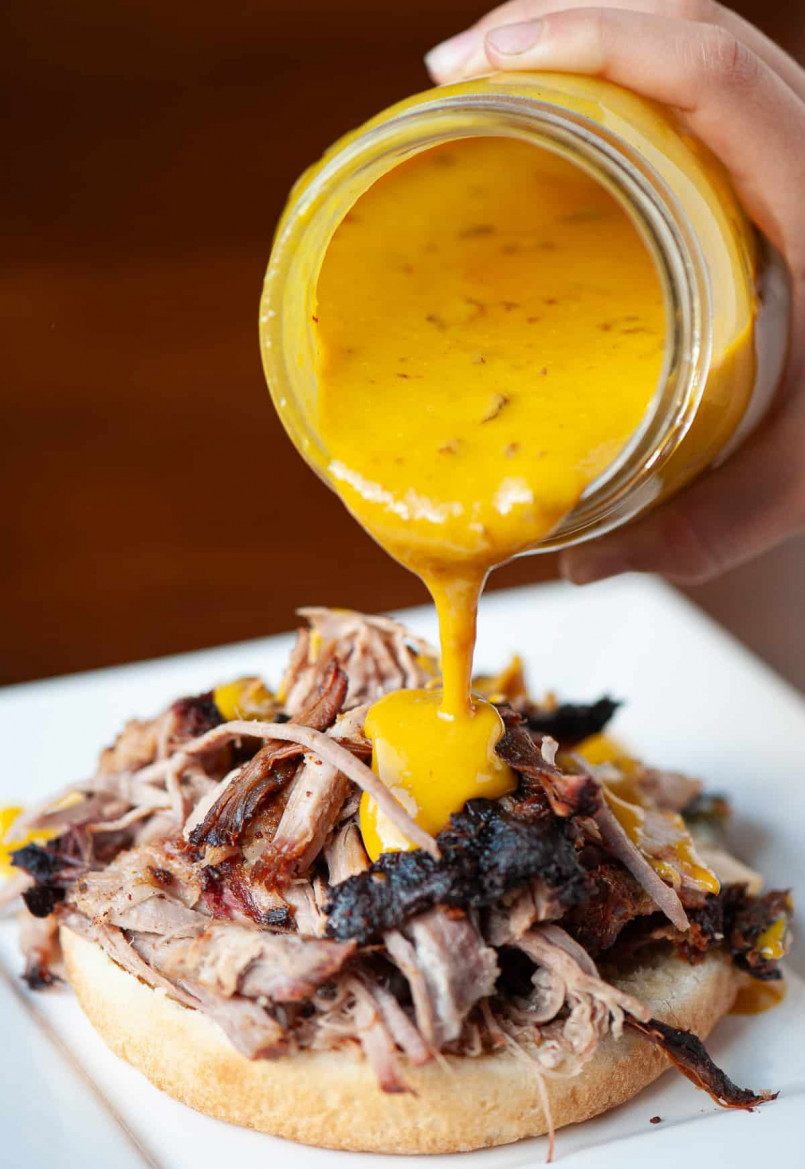
Kansas City, Missouri: Sweet and Smoky
Kansas City earned its reputation as a barbecue heavyweight by embracing diversity-in both meat selection and technique. While other traditions specialize in specific cuts, Kansas City pitmasters pride themselves on smoking everything: beef, pork, chicken, turkey, and even fish. This inclusive approach helped the city develop into a barbecue melting pot where various regional styles converge.
The city's signature contribution is its thick, sweet, molasses-and-tomato-based sauce that has become America's dominant commercial barbecue flavor profile. Kansas City also popularized burnt ends-once-discarded brisket points now transformed into caramelized, flavor-packed cubes considered a delicacy. The city's 100+ barbecue restaurants and competition culture continue to push innovation while respecting tradition.
Memphis, Tennessee: Dry Rub Ribs
Memphis elevated pork ribs to an art form with two distinct approaches that showcase the city's barbecue philosophy. Dry ribs feature complex spice rubs applied before and after smoking, creating a flavorful crust that needs no sauce to shine. Wet ribs receive multiple bastings of tangy sauce during their final cooking stages, developing a caramelized glaze that complements the smoky pork.
The city also embraces pulled pork shoulder served on sandwiches topped with coleslaw-a combination that perfectly balances smoke, meat, sauce, and crunch. Memphis maintains a vibrant competition scene centered around the annual World Championship Barbecue Cooking Contest, where teams compete for supremacy in multiple categories while preserving the city's pork-centric tradition.
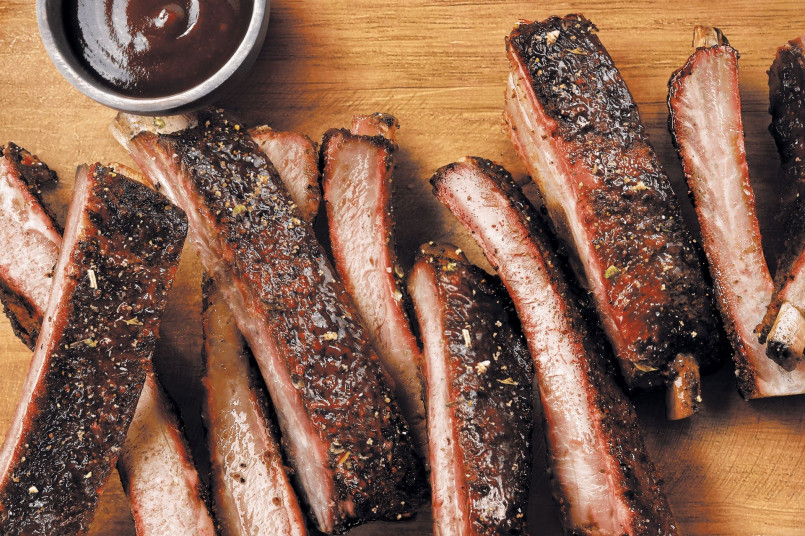
Alabama: White Sauce Pioneer
Alabama's distinctive contribution to barbecue culture is the peppery, mayonnaise-based white sauce created by Bob Gibson in Decatur in 1925. This tangy, creamy sauce was originally developed for chicken but has become a versatile complement to various smoked meats throughout the state and beyond. The sauce's unique profile-combining mayonnaise, vinegar, and black pepper-cuts through smoky flavors with a cooling tang.
While white sauce remains Alabama's most famous barbecue innovation, the state embraces multiple traditions. Southern Alabama features more similarities to Florida with its focus on pork and vinegar-tomato sauces, while northern Alabama showcases chicken with white sauce alongside smoked pork. This regional diversity reflects Alabama's position at the crossroads of several barbecue traditions.
Kentucky: Mutton Country
Kentucky stands apart in the barbecue landscape with its dedication to mutton-adult sheep meat that develops intense flavor when slowly smoked over hickory. This tradition, centered in western Kentucky around Owensboro, traces back to early Scotch-Irish settlers and has been preserved when mutton fell out of favor elsewhere in American cuisine.
The strong flavor of mutton pairs perfectly with the region's distinctive "black" dip-a Worcestershire-based sauce containing vinegar, lemon juice, and allspice that cuts through the rich meat. Kentucky barbecue also features unique serving traditions, including burgoo (a hearty stew containing multiple smoked meats) and Monroe County-style shoulder steaks sliced thin and dipped in a spicy vinegar sauce.
Georgia: Brunswick Stew Territory
Georgia barbecue often gets overshadowed by its neighbors, but the state maintains distinctive traditions worthy of recognition. Chief among these is Brunswick stew, a tomato-based concoction featuring multiple smoked meats (typically pork and chicken) combined with corn, lima beans, and other vegetables. This hearty side dish-claimed as an invention by both Brunswick, Georgia, and Brunswick County, Virginia-remains an essential component of Georgia barbecue plates.
The state's barbecue generally focuses on pork, with a sauce profile that balances sweet, tangy, and spicy elements. North Georgia shares similarities with Western North Carolina styles, while coastal Georgia shows influences from South Carolina. Atlanta has developed into a barbecue melting pot, with establishments representing traditions from across the South alongside innovative approaches.
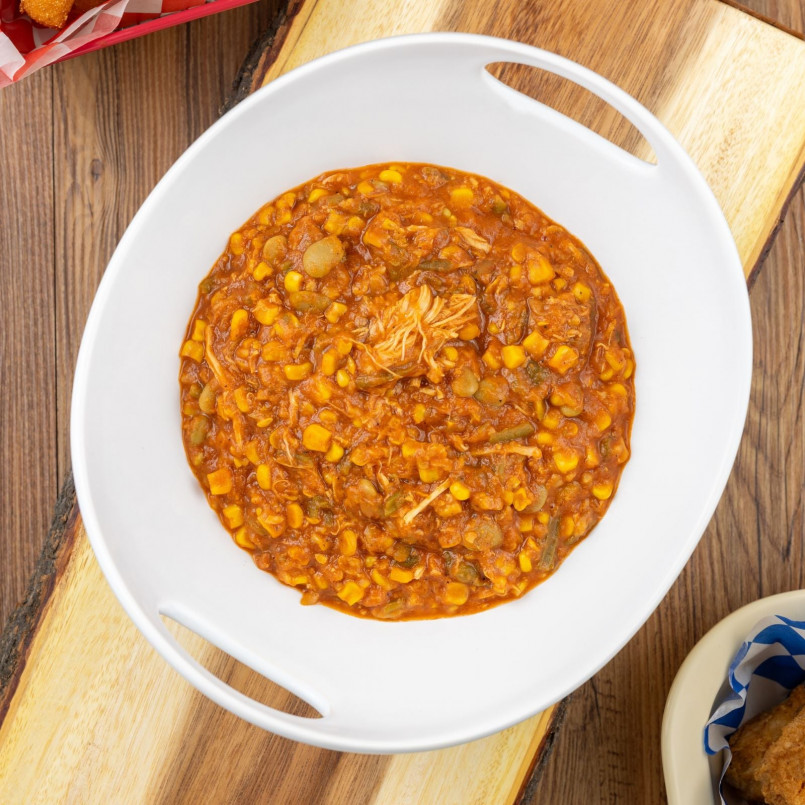
St. Louis, Missouri: Saucy Pork Steaks
St. Louis has cultivated barbecue traditions distinct from its Kansas City counterpart, with unique cuts and preparations that showcase the city's particular approach to smoke and fire. The signature St. Louis contribution is the pork steak-sliced from the shoulder (Boston butt) and slow-smoked before being finished with sweet, sticky sauce. This economical cut transforms through proper smoking into a tender, flavorful staple of backyard barbecues and restaurants alike.
The city also lent its name to a specific trim of spare ribs (St. Louis-style) where the rib tips are removed to create a more uniform rack. St. Louis sauces tend to be thinner and tangier than Kansas City's sweeter varieties, reflecting the city's position between Midwestern and Southern barbecue influences. The city's barbecue culture combines commercial restaurants with a strong tradition of neighborhood grilling and smoking.
Oklahoma: Smoked Bologna Heaven
Oklahoma barbecue reflects the state's position at the crossroads of Texas, Kansas, and Southern influences, creating a hybrid style that embraces multiple meats and methods. Perhaps the most distinctive Oklahoma contribution is smoked bologna-thick-cut slabs of the lunch meat transformed through smoking into a flavorful delicacy often served on sandwiches with sauce and pickles.
The state also features outstanding brisket (showing Texas influence), ribs, hot links, and chicken. Oklahoma barbecue sauce typically balances sweet and tangy elements, often featuring a thinner consistency than Kansas City versions. Many establishments serve their meats chopped rather than sliced or pulled, creating a distinctive texture that has become part of the state's barbecue identity.
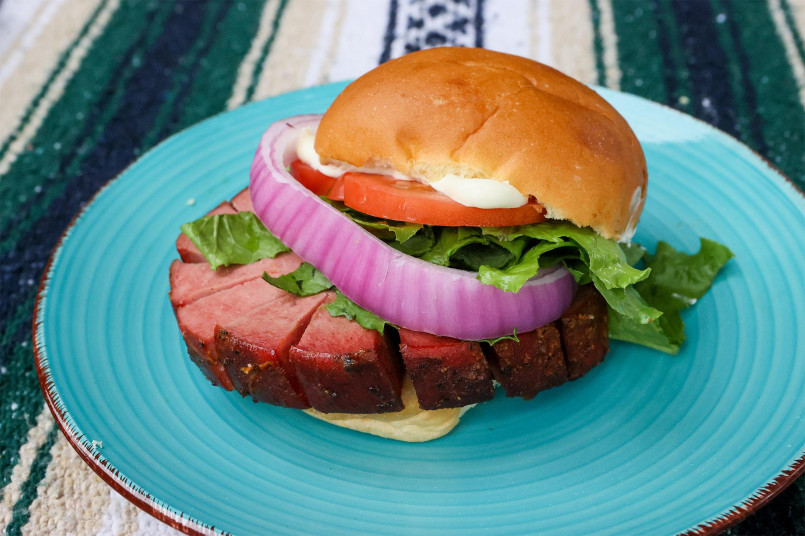
Frequently Asked Questions About 10 States With the Most Legendary BBQ Traditions in America
What makes Texas brisket different from other barbecue styles?
Texas brisket stands apart through its minimalist approach: simple salt and pepper rubs, post oak or mesquite smoke, and extremely long cook times (12-16 hours) at low temperatures. Unlike other regions that rely heavily on sauce, Texas brisket focuses on developing bark (the flavorful exterior crust) and rendering the tough cut's fat to create a moist, tender result that needs no sauce. The meat speaks for itself with a pronounced smoke ring and melt-in-your-mouth texture.
Why do North and South Carolina have different barbecue sauces?
The Carolina sauce differences reflect historical settlement patterns and available ingredients. Eastern North Carolina's vinegar-pepper sauce (the oldest American barbecue sauce) emerged from English cooking traditions, while Western North Carolina's tomato-vinegar sauce developed when tomatoes became more widely available. South Carolina's signature mustard sauce originated with German immigrants who brought their mustard traditions to the Midlands region, creating a distinctive yellow sauce that's now emblematic of the state's barbecue identity.
What's the best time of year to visit these states for barbecue?
While great barbecue is available year-round, spring and fall offer ideal conditions for barbecue tourism. Major competitions and festivals typically occur in these seasons, including Memphis in May (Tennessee), the American Royal (Kansas City, September-October), and numerous Texas festivals in spring. Summer visits provide excellent barbecue but may require early arrival at popular establishments as they often sell out. Winter offers shorter lines but fewer festivals. Always check ahead as iconic establishments like Franklin Barbecue in Austin often have long lines regardless of season.
How has competition barbecue influenced regional styles?
Competition barbecue has created both standardization and innovation in regional styles. Organizations like the Kansas City Barbeque Society have established judging criteria that sometimes reward appearance and consistency over tradition, leading some competitors to adopt techniques that please judges rather than strictly adhere to regional styles. However, competitions have also elevated barbecue craftsmanship, introduced new technologies like precision temperature controllers, and created cross-pollination between regional techniques. Many award-winning competition pitmasters have opened restaurants that blend traditional and competition approaches.
Are there any emerging barbecue states that didn't make this list?
Several states are developing notable barbecue cultures that could soon join the ranks of traditional powerhouses. California has emerged as a barbecue destination combining traditional techniques with local ingredients and multicultural influences. New York City has seen an explosion of quality barbecue restaurants applying craftsman approaches to multiple regional styles. Florida's distinctive mix of Southern traditions and Caribbean influences creates unique barbecue approaches, particularly in South Florida. Even northern states like Illinois and Michigan have developed thriving barbecue scenes that respect tradition while introducing regional innovations.
